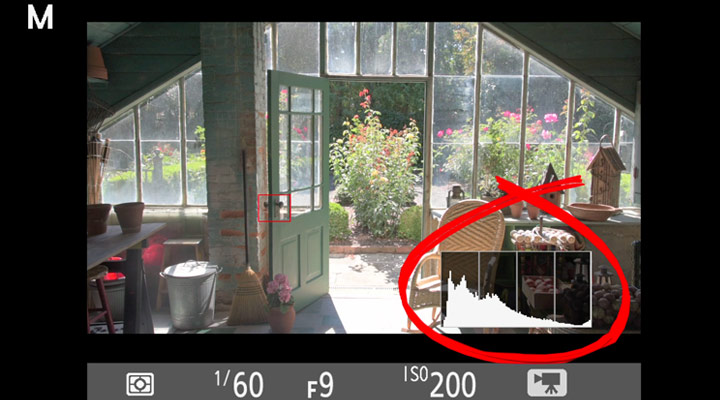Using the Histogram to Check Exposure for Video
DSLR Video Tips - Reading a Histogram (2:53 minutes)
There are a few different ways to check your exposure when you’re shooting movies with your Nikon DSLR.
One is to go automatic and let the camera take care of everything, and the other is to manually adjust your settings until you see the exposure you like on the LCD.
Adjusting the exposure by eye works great, but several Nikon models have features that can assist you even further. One way to get a visual confirmation of your exposure is to use the Histogram as you shoot. A Histogram is a graphic representation of the exposure indicating the darkest parts of your scene on the left going across to the brightest parts on the right.
To turn on the Histogram display, activate Live View and then press the “info” button until the Histogram appears over your image. The vertical part of the scale—the peaks and valleys—shows the percentage of the scene that is bright and dark. A well-balanced exposure shows a fairly even series of these peaks and valleys across the scale.
When the indicator peaks are up against the right side of the scale, that part of the image is overexposed and will contain very little detail. When the indicator starts peaking all the way to the left, it means a large part of the image is underexposed and lacks detail.
You can visually set an exposure by eye on the LCD, then do a quick check on the histogram to make sure that the peaks and valleys are balanced across the scale, to help ensure the image will come out the way you want.
Highlight Display or Zebra Stripes
There’s another useful feature that’s found on certain Nikon DSLRs such as the D810, called a Highlight display. When you turn this on and look at your scene through Live View, any parts of the scene that are overexposed will have these diagonal stripes over them, sort of like Zebra stripes. In fact, they actually call them Zebras in the professional video business. Using the Highlight display is a quick way to set your exposure.
All you have to do is adjust your exposure until the stripes appear over the brightest parts of your scene, then back down a little and you’re all set. The Highlight display is also useful when you have a wide contrast range in your scene.
Remember to check your DSLR camera’s User’s Manual for instructions on its particular menu navigation and dial layout.






